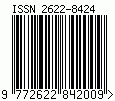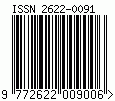SINERGI PEMERINTAH DAN LEMBAGA PENDIDIKAN DALAM MENCAPAI TUJUAN PENDIDIKAN (STUDI ANALISIS HISTORIS MADRASAH NIZAMIYYAH)
DOI:
https://doi.org/10.53640/azkiya.v7i1.1429Keywords:
Keyword: Synergy, Educational Goals, Education, NizamiyyahAbstract
Madrasah Nizamiyyah was the first Islamic educational institution that successfully initiated a modern classical education system in the Abbasid era. This success inspired new breakthroughs in the world of Islamic education in the future. This library research study uses a thematic approach with documentation data collection techniques in the form of collecting data from documents that correlate with research. The data was analyzed using the content analysis method and then verified using the source triangulation method. The research results show that the positive synergy between the government and educational institutions has become a mutualistic symbiosis which has a positive impact on both sides. Educational institutions benefit from government regulations that support the development of the education system and the fulfillment of basic needs, while the government benefits from the growing level of literacy and quality of community resources thereby improving the quality of the nation and state globally.
Keyword: Synergy, Educational Goals, Education, Nizamiyyah
References
Arnold, S. Warner and E.W. Osborne, “Experimential Learning in Secondary Agricultural Education Classrooms,” Journal of Southern Agricultural Research (2006): 30–39.
David Brooks and F. Goble, The Case for Character Education: The Role of the School Teaching Values and Virtue California: Studio 4, 1997.
Direktorat Ketenagaan Direktorat Jenderal Pendidikan Tinggi Kementrian Nasional. Kerangka Acuan Pendidikan Karakter Tahun Anggaran, 2010
Efendi, Rusdi, Buku Ajar Geografi Dan Ilmu Sejarah, Banjarmasin: Prodi Pend Sejarah FKIP ULM, 2020
Holsti, Ole R., Content Analysis for the Social Science and Humanities Massachusetts: Westley Publishing, 1969.
Ihsan, Khairul, Filsafat Sejarah Menurut Ibn Khaldun dan Karl Marx, Jurnal Paradigma, vol. 2, no. 2, 2020, 81-110
Kebijakan Nasional Pembangunan Karakter Bangsa Tahun 2010-2025, 2010
Kementrian Pendidikan Nasional Badan Penelitian dan Pengembangan Pusat Kurikulum, 2010
Makdisi, Georrge, The Rise of College Institutions of Learning in Islam and the West, England: Endinburgh University Press, 1981
Masy’ari, Anwar. Akhlakul Qur’an, Surabaya: Bina Ilmu, 1990
Muhibuddin, Madrasah Nizamiyah Dalam Sejarah Peradaban Pendidikan Islam Di Baghdad, Ameena Journal, vol. 1, no. 1, 2023, 120-129
Muliyadi, dkk, Pendekatan dan Implementasi Kurikulum 2013, Edukasia, vol. 1, no. 1, 2017
Muqoyyidin, Andik Wahyun, Aktualisasi Pendidikan Islam Di Dalam Institusi-Institusi Madrasah Terkemuka Abad Klasik, Jurnal Madrasah, vol. 6, no. 1, 2013
Nata, Abudin. Manajemen Pendidikan, Jakarta: Prenada Media, 2003
Nurlila Kamsi, Nizamul Mulk dan Madrasah Nizamiyah Relasi Lembaga Pendidikan dan Penguasa, Edification Journal, vol. 5, no. 1, Juli 2022, 11-24
Panduan Pelaksanaan Pendidikan Karakter Kemendiknas tahun 2011
Rasak, Muhammad Sarib Abdul, Pendidikan Islam Di Zaman Kemajuan Dalam Tinjauan Sejarah Peradaban Islam, Ibtida’I Datokarama, vol. 3, no. 1, 2022
Sugiyono, Metode Penelitian Kuantitatif, Kualitatif Dan R & D (Bandung: Alfabeta, 2013.
Shihab, Quraish. Tafsir Al Misbah: Pesan, Kesan dan Keserasian Al Qur’an, vol. 7, Jakarta: Lentera Hati, 2000
Syahid, “Pertumbuhan Madrasah: Periode Awal Hingga Nizhamiyah, Jurnal Qathruna, vol. 5 no. 1, 2018
Tritton, A.S., Materials on Muslim education in the Middle Ages, London: Luzac and Company, 1957
Wahidah, Anita Solihatul, Pengembangan Pendidikan Islam Era Modern Melalui Madrasah Nizamiyah, Al Mabsut: Jurnal Studi Islam Dan Sosial, vol. 12, no. 1, Maret 2018, 1-16
Downloads
Published
Issue
Section
License
Copyright (c) 2024 AZKIYA

This work is licensed under a Creative Commons Attribution 4.0 International License.













